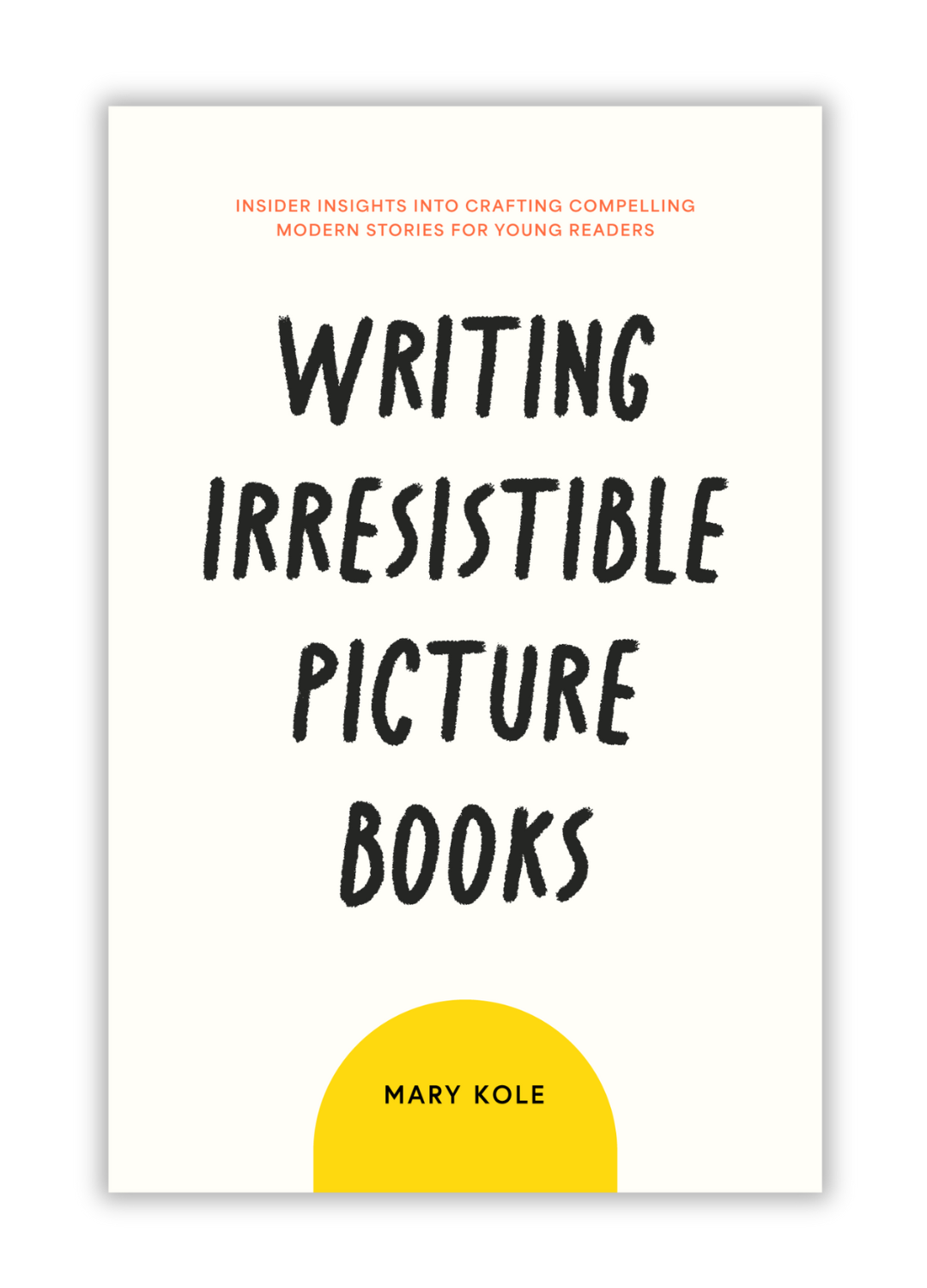Writing a Picture Book Story
By Mary Kole
Mary Kole is a former literary agent, freelance editor, writing teacher, author of Writing Irresistible Kidlit, and IP developer for major publishers, with over a decade in the publishing industry.
Picture books are a beloved category of children’s book literature that both children and adults can enjoy. They provide a perfect platform to teach children essential values (without moralizing, of course), ignite their creativity, and introduce them to the world of imaginative storytelling. If you have a story idea for the picture book target audience, you are on the right track! But before you start putting your pen to paper or finger to keyboard, you must consider certain parameters when writing a picture book story. In this article, I’ll guide you through the essential elements to consider when writing a picture book, including ideal picture book age range, page count, picture book word count, special considerations of this category, and other best practices.
Parameters for Writing a Picture Book Story
When you’re writing a picture book story, it is essential to keep in mind that you are not only writing for children, but also for their parents and caregivers (and other purchasing gatekeepers). Make sure that your story is appropriate for the target age group and that the story themes are relatable to preschool audiences. Keep in mind that the protagonist should be around the same age as your intended audience, as discussed below. The main character should be likable, relatable, and interesting. They should also undergo some character development over the course of the story.
Your Ideal Picture Book Age Range
The age range for the main character in a picture book story should be between three to eight years old, which mirrors the picture book age range for readers. The protagonist's age should match the maturity level and emotional intelligence of the target audience. These characters usually have a problem to solve or adventure to go on, and children can learn and have experiences along with them. On the youngest side of the picture book age range, you have readers between zero and three. The middle picture book age range is ages three to five, and older readers might be five to seven. This also reflects the ages of your protagonist.
Picture Book Story Page Count
Picture books are usually very short, ranging between 32 and 40 pages. This is the publishing industry standard picture book page count. Sometimes picture books can be 24 pages, or 48 pages and above, but pages are always added in increments of eight. This limitation of space forces the writer and illustrator to be creative and get to the heart of the story, and the writer to leave room for illustrations. Keeping your storytelling straightforward, impactful, and engaging is the key to a successful picture book story, with a focused plot arc that pulls throughout the entire manuscript around a central premise.
Special Considerations of Writing a Picture Book Story
When writing a picture book story, you need to consider illustrations, design, and layout. The illustrations and text should complement each other to provide a seamless reading and storytelling experience, for both pre-reading kid audiences and the adults reading the work aloud. This makes for excellent read-aloud potential. Also, think about the book's size and how it will exist as an object in readers’ hands. Consider picture book story page turns and other elements of the interactive reading experience.
The Size of the Picture Book Publishing Market
Picture books are an established category of children’s books, and the market has many successful publishers and distribution channels in place. Almost every major publisher issues picture books, and there are even institutional publishers that work primarily with picture books for schools and libraries. The picture book market includes several related categories, such as board books, concept books, and nonfiction picture books. However, competition is fierce, and the market demands high-quality storytelling and illustrations. (You don’t need to get the book illustrated ahead of publication if you’re hoping to work with a traditional publisher. They will hire an illustrator on your behalf if you get a book deal. You will only need to source your own art if you self-publish.)
Picture Book Story Series
Writing a series is an attractive proposition in the picture book market, and is a great way to build a loyal readership among children and their grown-ups. When planning a series, think about the protagonist, setting, and overall themes. Think about a series arc, not just a plot arc for a single story. The main character should be well-developed, charming, and able to handle different kinds of adventures. Additionally, the stories should be sequential and build upon each other. A series protagonist will generally not change wildly from story to story, but there should still be a character arc involved in each installment, and series-wide.
Picture Book Story Best Practices
When writing a picture book story, keep in mind that simplicity is key. To be precise, you don’t want to dumb down your story idea, but you will want to use clear, concise language, and not overcomplicate the narrative structure. The story, language, and illustrations should work together harmoniously to create an engaging reading experience. The story should also have a clear plot and emotional arc, use active voice and concrete language. Leave writing description and writing imagery to the actual illustrations, and pare back your prose (or rhyme, through a rhyming picture book can be a tough sell in today’s market). Additionally, ensure that the story can appeal to both a child's immediate interests and their long-term development and education, without overt moralizing.
Writing a picture book story is a thrilling and rewarding experience. You get to spark a child's imagination, teach them valuable lessons, and introduce them to the magic of storytelling. However, to create a successful picture book story, you need to carefully consider its essential elements, keep it simple, relatable, and impactful. With dedication, hard work, and the right attitude, you can bring your picture book story to life and captivate your young audience (and their adults).

Click here to purchase Writing Irresistible Picture Books, my book on children’s picture books. This comprehensive guide is crammed with craft advice and groundbreaking original research, including a survey of 1,000 upcoming picture book deals, a breakdown of 80 modern and marketable picture book topics, and in-depth analysis of over 150 published picture books.



